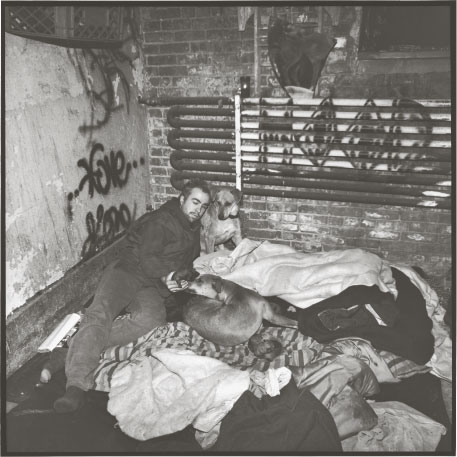“Homelessness is not truly the condition of not having a home.”
This one statement was the foundation of Margaret Morton’s photographic documentary. Morton explored the “unappealing” tunnels and Burroughs of New York to showcase the beauties of these seemingly dangerous and forgotten, places in the city. Her initial objective was to show the connection between the homeless and the communities of homes that they have made on their own, along with their sense of stability. “By taking a city that is a site for mass marketing and depicting communities that have been pushed out of the consumer image of New York and out of adequate New York life itself, she proves that spectacles take place at public expense.”(Nersessova) Morton invites us into the lives of people we see as inferior and sometimes dangerous, forgetting that they too are humans.
“Because shelter is an essential part of sustaining oneself, identity is closely tied to one’s place of home, and because no place is guaranteed to be a permanent home, this aspect of identity is consistently fragile.”(Nersessova)
Having a home and your sense of identity are both so universal and fragile. The only difference between those who aren’t recognized as homeless and those who are, is that homeless people the vulnerability of homess people are more apparent. Homeless individuals are thought to be the ones having unstable identities. This couldn’t be any further from the truth. Through Morton’s photogrpahic presentation, we see the creations of dwellings from practically nothing; old clothes, bedding, scraps of metals, and tools that we throw out on a daily basis. These areas that many would think to be dull spaces are full of life, artwork, and humanity.
Tourists aren’t concerned with the relationship between city and identity. “A tourist’s map will guide a visitor to theaters, restaurants, shopping centers, and museums. Meanwhile, every unprofitable location is treated as an abyss on traditional city maps.” They are merely concerned with having fun and exploring the most popular, positive areas. The tunnels of New York which may seem “neglected and undesirable”, but for its inhabitants, it’s a place of sanctuary, sanity, and security. One testimony was summed as saying that:
“Since the tunnel is shelter from the conflicts above, the residents’ choice to live underground demonstrates that the social problems above ground have forced the, into an alternative sphere.”(Nersessova)
Some would say that those choosing to live in the tunnels rather than shanties above ground, were a representative of how those individuals were failed by their societies. Many simply say that the homeless are insane and “took the easy way out” and by doing so, those individuals exclude themselves from seeing that they are just as vulnerable to being homeless. Even the term “homeless” begins to lose its construct throughout the article. You may rent your property, share your property, forclosed your property; either way it goes the very few people that don’t identify as homeless, own the property in which they are claiming.
Not only does Morton show us the beautiful sense of community created by the individually structured homes, but she shows how they are so cruelly destroyed, leaving the homeless without true homes, yet again. “Destroying their homes was identical to moving out garbage, and the effort it took to build these homes did not exist because the perception of the ‘superior’ group did not function to recognize the significance of these homes.” (Nersessova) Many of these tunnel dwellers hadn’t felt homeless until their self-made homes were destroyed by government officials and arsonists. Morton interviewed one individual who said that “his perception of his state of being is not one of being homeless; rather it is having a home that is constantly in danger of being destroyed.”(Nersessova)
The most impactful part of this article is when Nersessova says:
“They are their homes from the very beginning; they are their homes because they physically create them and emotionally invest in the process of home building.” (Nersessova)
Many of us may not be able to understand this, but homeless people do have homes.Handmade homes built with character, a minimal amount of tools, communities consisting of gardens, pets, friends, and ultimately a sense of safety.


